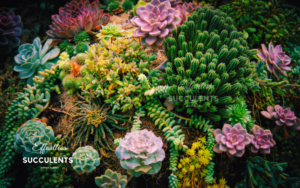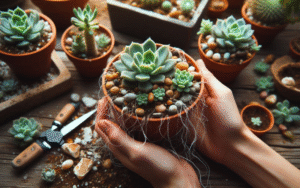Bringing greenery indoors can make any space feel fresh and vibrant, but if you share your home with pets, it’s important to know that some common houseplants can be dangerous—even deadly—to cats and dogs. As a plant lover and pet parent myself, I’ve learned the hard way how crucial it is to choose pet-safe plants. Bringing greenery indoors can transform your space, but as a pet owner, knowing which toxic houseplants for pets pose dangers is essential. Many popular houseplants that beautify our homes can be harmful—even fatal—to our beloved cats and dogs. After my own frightening experience with my cat Luna and a poisonous lily, I’ve become passionate about pet plant safety. In this comprehensive guide, I’ll reveal the most dangerous plants for cats and dogs, detailed symptoms of plant poisoning in pets, critical emergency steps if your pet ingests a toxic plant, and a curated selection of gorgeous pet-safe houseplant alternatives that allow you to maintain your indoor jungle without compromising your furry friends’ wellbeing.de, I’ll share the most dangerous houseplants for cats and dogs, what symptoms to watch for, emergency steps to take if your pet ingests a toxic plant, and plenty of beautiful pet-safe alternatives for your indoor garden.
Table of Contents
Why Pet Owners Need to Worry About Houseplants
Many pets, inquisitive cats and playful dogs, love to nibble on leaves or dig in the dirt. However, over 700 indoor and outdoor plants are toxic to pets. Even a small bite can cause symptoms ranging from mild stomach upset to severe organ damage, depending on the plant and amount eaten.
The line between a healing houseplant and a harmful one is often invisible to the untrained eye. Nature’s most beautiful creations can sometimes be its most dangerous—a reminder that knowledge, not fear, is our best protection when bringing the outdoors in.
Common Toxic Houseplants to Avoid
| Plant Name | Toxic To | Main Toxins / Effects | Symptoms in Pets |
| Lilies | Cats (esp.) | All parts are extremely toxic, especially pollen | Kidney failure, vomiting |
| Sago Palm | Cats & Dogs | Cycasin (especially seeds) | Liver failure, vomiting |
| Aloe Vera | Cats & Dogs | Saponins, anthraquinones | Vomiting, diarrhea |
| Corn Plant (Dracaena) | Cats & Dogs | Saponin | Vomiting, appetite loss |
| English Ivy | Cats & Dogs | Triterpenoid saponins | Vomiting, abdominal pain |
| Hydrangea | Cats & Dogs | Cyanogenic glycosides | Vomiting, diarrhea |
| Jade Plant | Cats & Dogs | Unknown toxin | Vomiting, slow heart rate |
| Poinsettia | Cats & Dogs | Saponins, latex | Mild vomiting, diarrhea |
| Asparagus Fern | Cats & Dogs | Sapogenin (in berries) | Vomiting, skin irritation |
| Dieffenbachia | Cats & Dogs | Oxalic acid | Swelling, vomiting |
| Kalanchoe | Cats & Dogs | Bufadienolides | Vomiting, heart problems |
| Azalea | Cats & Dogs | Grayanotoxins | Vomiting, coma |
| Amaryllis | Cats & Dogs | Lycorine | Stomach pain, tremors |
| Chrysanthemum | Cats & Dogs | Pyrethrins | Vomiting, loss of coordination |
Not all toxic plants cause the same level of harm. Some cause mild irritation, while others can be fatal. Here are some of the most dangerous and common houseplants you should keep away from your pets: This is not a complete list. For a full database, check the ASPCA Toxic and Non-Toxic Plants List.
Signs Your Pet Has Ingested a Toxic Plant
Being able to recognize the symptoms of plant poisoning could save your pet’s life. Here are the warning signs to watch for:
Gastrointestinal Symptoms
- Vomiting (sometimes with blood)
- Diarrhea (sometimes with blood)
- Drooling or foaming at the mouth
- Loss of appetite
- Abdominal pain or swelling
Respiratory/Cardiovascular Symptoms
- Difficulty breathing
- Rapid breathing
- Irregular heartbeat
- Weakness
- Collapse
Neurological Symptoms
- Dilated pupils (especially in cats)
- Tremors or seizures
- Disorientation
- Lethargy or depression
- Loss of coordination
Kidney-Related Symptoms (Especially with Lily Poisoning in Cats)
- Increased thirst
- Increased urination initially, followed by reduced urination
- Dehydration
- Bad breath with ammonia odor
I can’t stress enough how important rapid response is when it comes to plant poisoning. Many of these symptoms can occur within hours of ingestion, and waiting too long can mean the difference between complete recovery and permanent damage.
My Experience: Why I’m Extra Careful Now
When I first started collecting houseplants, I didn’t realize my curious tabby, Luna, would be so interested in them. One day, I caught her nibbling on a peace lily leaf. Luckily, I acted fast and called my vet, who told me to watch for symptoms. Thankfully, Luna was fine, but that scare taught me to double-check every plant before bringing it home.
What to Do in a Plant Poisoning Emergency
If you suspect your pet has eaten a toxic plant, time is critical. Here’s what to do:
1. Remove Any Plant Material
If you catch your pet in the act, carefully remove any remaining plant material from their mouth. Wear gloves if possible to protect yourself.
2. Don’t Induce Vomiting Unless Instructed
Important: Do not try to make your pet vomit unless specifically instructed by a veterinarian. Some substances can cause more damage when coming back up.
3. Collect Evidence
If possible, identify the plant your pet has eaten. Take photos or bring a sample (in a sealed bag) to the veterinarian.
4. Call Your Vet or Pet Poison Hotline Immediately
Contact your veterinarian or the ASPCA Animal Poison Control Center (888-426-4435) right away. The ASPCA hotline has a consultation fee, but it’s staffed 24/7 by toxicology experts.
5. Watch for Symptoms
Monitor your pet closely for any of the symptoms listed above, even if they seem fine initially. Some toxins take time to show effects.
6. Get to the Vet
In most cases of known toxic plant ingestion, you should take your pet to the veterinarian even if symptoms haven’t appeared yet. Early treatment improves outcomes dramatically.
Pet-Safe Alternatives for Plant Lovers
The good news is that being a plant enthusiast and a responsible pet parent aren’t mutually exclusive! Here are some beautiful, pet-safe houseplants you can enjoy without worry:
Safe Foliage Plants
- Boston Fern – Lush, arching fronds that thrive in indirect light and humidity
- Areca Palm – Elegant, upright palm with feathery fronds
- Spider Plant – Attractive, air-purifying plant with arching variegated leaves (although it can cause a mild upset stomach if eaten in large quantities)
- Calathea/Prayer Plant – Beautiful patterned leaves that move throughout the day
- Peperomia – Compact plants with thick, fleshy leaves in various patterns
Safe Flowering Plants
- African Violet – Compact plants with fuzzy leaves and purple, pink, or white flowers
- Orchids – Elegant blooms that last for months
- Christmas Cactus – Trailing succulent with colorful blooms in winter
- Echeveria and Most Succulents – Geometric rosettes in various colors (Note: While most common succulents are safe, some rare varieties may be toxic)
Safe Herbs (Bonus: Useful in Cooking!)
- Basil
- Rosemary
- Thyme
- Mint (Note: Cats may be attracted to mint’s scent)
When I redecorated after Luna’s lily incident, I created a gorgeous display with Boston ferns, prayer plants, and an orchid collection. My home still feels like a vibrant jungle, but now I can relax knowing my curious cat won’t be harmed if he decides to take a nibble.
Creating a Pet-Safe Plant Environment
Even with non-toxic plants, it’s best to discourage pets from making your houseplants into snacks. Here are some tips I’ve found effective:
Strategic Placement
- Place plants on high shelves or in hanging baskets out of reach
- Create a dedicated plant room that remains off-limits to pets
- Use plant stands to elevate poisonous plants (but remember, fallen leaves can still pose a risk)
Deterrents
- Spray plants with diluted lemon juice or apple cider vinegar (taste deterrents)
- Place aluminum foil around the base of plants (most cats dislike the texture)
- Provide pet grass (cat grass, wheat grass) as a safe alternative for nibbling.
Monitoring
- Regularly check plants for fallen leaves or damage
- Observe new plants to see if they attract your pet’s attention
- Consider removing highly toxic plants altogether if you have particularly curious pets
Frequently Asked Questions
Are succulents safe for pets?
Most common succulents like Echeveria, Haworthia, and Sempervivum are non-toxic to pets. However, some popular succulents like Kalanchoe and Euphorbia are toxic. Always research the specific variety before bringing it home.
My cat loves to chew on plants. How can I stop this behavior?
This behavior is natural, especially for cats. Provide pet-safe alternatives like cat grass, ensure environmental enrichment, and use deterrents like bitter apple spray on plant leaves. Elevated plant shelves and hanging planters can also help.
Can I keep toxic plants if my pets don’t show interest in them?
While keeping toxic plants, if your pets ignore them is possible, remember that pets’ behaviors can change. A previously uninterested pet might suddenly decide to sample a plant. The safest approach is to avoid highly toxic plants entirely.
What’s the difference between mildly toxic and severely toxic plants?
Mildly toxic plants typically cause temporary discomfort, like vomiting or diarrhea, but rarely cause lasting damage. Severely toxic plants can cause organ failure or death, even in small amounts. Lilies for cats and sago palms for both cats and dogs are examples of severely toxic plants.
If my plant isn’t on this list, how can I check if it’s safe?
The ASPCA’s toxic plant database is an excellent resource for checking specific plants. You can also call your veterinarian or the ASPCA Poison Control Hotline for information about unlisted plants.
What should I do if my cat or dog eats a toxic plant?
Call your vet or the ASPCA Poison Control Center immediately. Don’t wait for symptoms to appear.
Conclusion
As both a devoted plant parent and pet owner, I’ve learned that creating a beautiful indoor garden doesn’t have to come at the expense of pet safety. After Milo’s frightening experience with lily toxicity, I’ve become passionate about spreading awareness of dangerous houseplants among fellow pet owners.
Remember that prevention is always better than treatment. Take time to research any new plant before bringing it into your home, keep toxic plants completely out of reach (or better yet, choose pet-safe alternatives), and know what to do if an emergency occurs.
By being informed and making thoughtful choices about your indoor garden, you can create a lush, green space that’s safe for all members of your household—furry ones included!
Have you had experiences with pets and toxic plants? Or do you have questions about specific plants not covered here? Share in the comments below!
This article was last updated on April 21, 2025. Please note that this guide covers common toxic houseplants but is not exhaustive. When in doubt, consult your veterinarian or the ASPCA Animal Poison Control Center at 888-426-4435.
Disclaimer: While I strive to provide accurate information based on research and personal experience, I am not a veterinarian. This article is for informational purposes only and should not replace professional veterinary advice.




